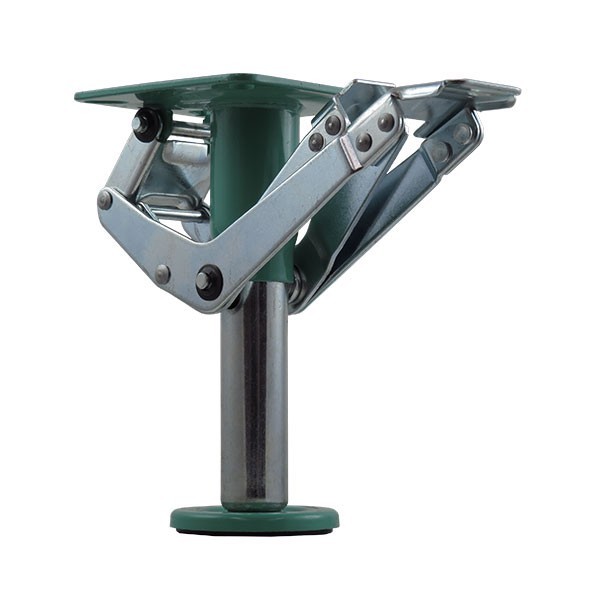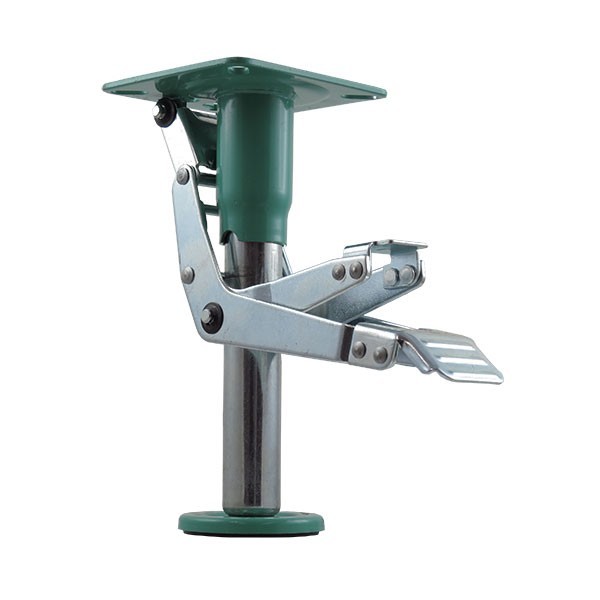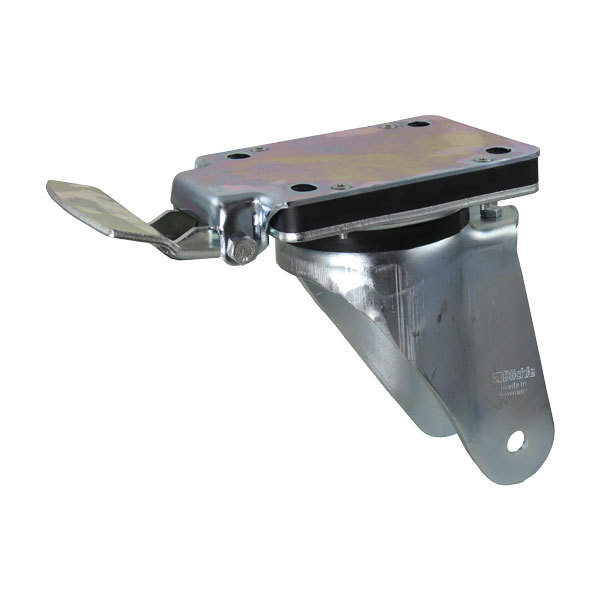Pop It & Lock It: The Truth About Floor Locks
WHY DO I NEED A FLOOR LOCK?
Casters, even when the brake engages, will still wobble slightly. Further more, depending on the position of the caster, the brake pedal can be unreachable. This causes problems while loading and unloading an application.

This brake cannot be engaged because the pedal is underneath the application.
THINGS TO KEEP IN MIND WHEN PURCHASING A FLOOR LOCK
- Floor locks should only be used on level ground
- The size of the floor lock should correspond to the diameter of the wheels on the application. 8" caster? 8" floor lock.
- Floor locks are not intended to lift or elevate the application. They are intended to be a supplemental support and cannot carry the weight of the entire application. It’s a brake, not a jack!
FLOOR LOCKS FROM CASTER CONNECTION
KICK BAR

This style floor lock has the top plate positioned long ways. This is perfect for mounting the floor lock on the side of an application as opposed to the traditional front/back formation. The kick bar floor lock is also our most economical option.
HAMMER LOCK


The hammer floor lock is our most durable and heavy-duty floor lock. It’s easy to engage and easy to release.
PEDAL

The traditional floor lock. A wide pedal for easy engagement
WHAT CASTER CONNECTION RECOMMENDS
Floor locks are fine and dandy but they really just overcompensate for the brakes on your casters. What if there was a caster that could essentially do the same thing as a floor lock?


The Blickle Ideal-Stop caster rig is the floor lock killer. The Ideal-Stop pedal is fixed in the trailing position making it always easy to engage. The rig also acts as a position lock so when the brake is engages it can’t swivel or move, therefore making it even more stable. The Ideal-Stop alleviates the need for floor locks on 99% of applications.
USEFUL LINKS
- The Ideal-Stop Prevents Damage - Case Study
- Blickle Brake Systems
Still not sure if a floor lock is right for your application? Contact us for a more in-depth consultation.